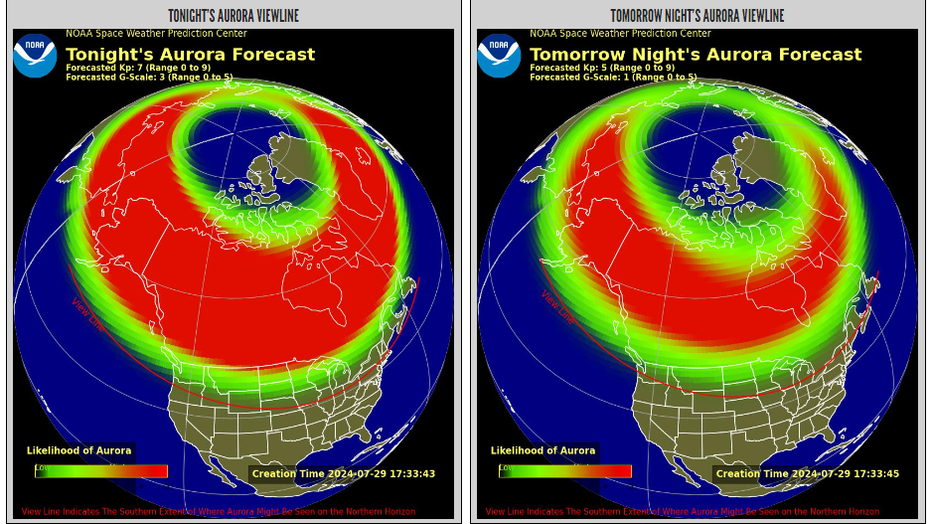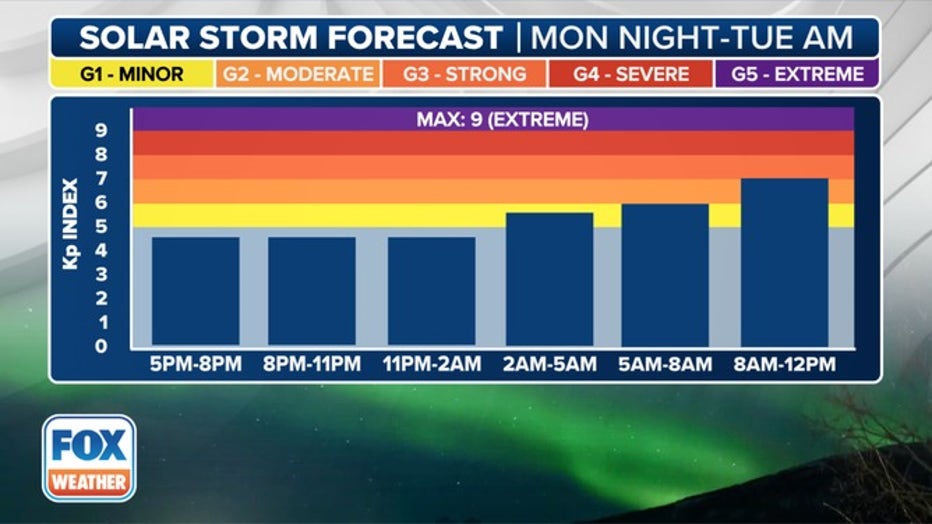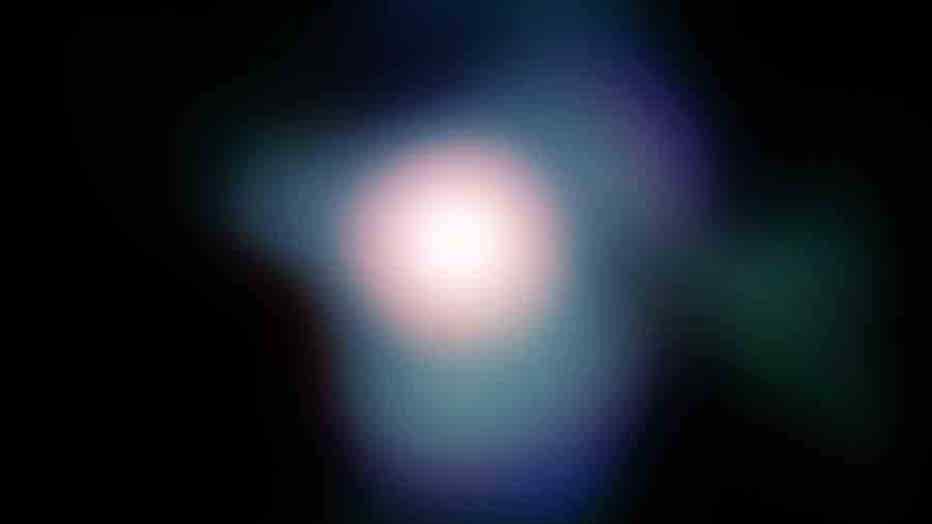NYC solar weather: How to see the northern lights, meteors this week
NEW YORK -
The dazzling northern lights could once again be visible in New York City.
A geomagnetic storm watch was issued Monday for a potential G3 (strong) solar storm by NOAA’s Storm Weather Prediction Center (SWPC).
Thanks to increased solar activity over the weekend, multiple solar flares and associated coronal mass ejections (CME) occurred.
These CMEs create the dazzling northern lights.
The most intense solar storms are likely to happen between Monday night and Tuesday this week.
Here's how to see the spectacular this week in NYC.
If you miss the northern lights, have no fear a meteor shower doubleheader is expected for late July through mid-August.
What to know
The charged particles of a CME create the beautiful dancing lights known as Aurora Borealis or the Northern Lights.
NASA satellites recently observed several CMEs blasting away from the Sun creating a strong solar flare on Sunday,
NOAA’s SWPC issued a geomagnetic storm watch from Monday through Wednesday, alerting of a potential G3 (strong) solar storm on Tuesday.
However, the public should not be concerned about the upcoming solar storm, according to FOX Weather experts.
Can you see the northern lights in NYC?

These lights are usually only seen near the Earth’s poles, but during more intense solar storms, they can be seen in the Tri-State area and even further south, like the last geomagnetic storm in NYC.
Based on NOAA's aurora forecast, the viewline will be just over parts of New York City on Monday night and possibly Tuesday.
The Tri-State area must first, of course, overcome some cloud cover and light pollution.
What time will the northern lights be visible in NYC?

NOAA's Space Weather Prediction Center suggests that prime viewing times will fall around midnight, spanning from 10 p.m. to 2 a.m.
Scientists at the SWPC use the Kp-index to characterize the magnitude of geomagnetic storms, and the greatest Kp-index levels are forecast to happen on Tuesday, reaching 7 out of 9 on the geomagnetic storm scale.
Northern lights forecast
According to the National Weather Service, skies will be partly cloudy tonight in NYC.
There is a chance of rain for Tuesday night, which isn't expected to affect viewing for the Northern lights.
Cloud cover could obscure the view on Monday night as the aurora cannot be seen if there are clouds.
How to see the meteor shower
The Southern Delta Aquariid meteor shower peaks in late July. And this year, it will coincide with a second smaller meteor shower, the Alpha Capricornids.
The Delta Aquariids occur every year in North America’s late summer. This year’s peak activity happens early Tuesday morning, with an expected 15 to 20 meteors visible per hour in the Northern Hemisphere, under dark skies. Viewing should be even better in the Southern Hemisphere. The shower lasts through August 21, according to the American Meteor Society.

Aug. 5, 2009: The sharpest image ever of Betelgeuse shows a mammoth star that is slowly evaporating. Betelgeuse (sounds a lot like "beetle juice"), also known as Alpha Orionis, is one of the largest and brightest stars known. The star is a familiar o
Around the same time, the Alpha Capricornid meteor shower should produce around five meteors per hour and lasts through Aug. 15.
The sun is also expected to continue to emit CMEs later this week.
FOX Weather and the Associated Press contributed to this report.

